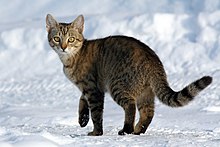Singular
In linguistic morphology, the singular is the variant of the number that indicates a single element of the referent of a word or expression. It contrasts with the plural and sometimes with the dual or other variants of the grammatical number.
Morphology of the singular
In the languages of the world, most often the singular does not have an explicit mark and the plural is marked by an additional morpheme. For example, in Spanish the morpheme that indicates singular is the so-called null morpheme, Ø, which does not correspond to any sound or spelling:
- the- house-Ø (singular)
- la-s casa-s (plural)
In many languages, like English, it's pretty much the same thing. However, not in all languages the singular morpheme is null: in Russian, for example, the morpheme for the nominative singular of the feminine gender is normally -a, or the version palatalized, -я.
In other languages such as Indonesian, the singular corresponds to the unmodified word, and the plural consists of the repeated word. Thus, from the plural orang-orang (men) there is the singular orang.
The following forms of plural marking are known:
- Through an added morphema (Romans, Germanic languages).
- By alternating the word (such as irregular English plurals:tooth/teeth 'diente/es', foot/feet 'pie/es').
- By total duplication of the word (Indonesian language) or by partial duplication (Utobate language).
Contenido relacionado
Yiddish
Protolanguage
Catalan
